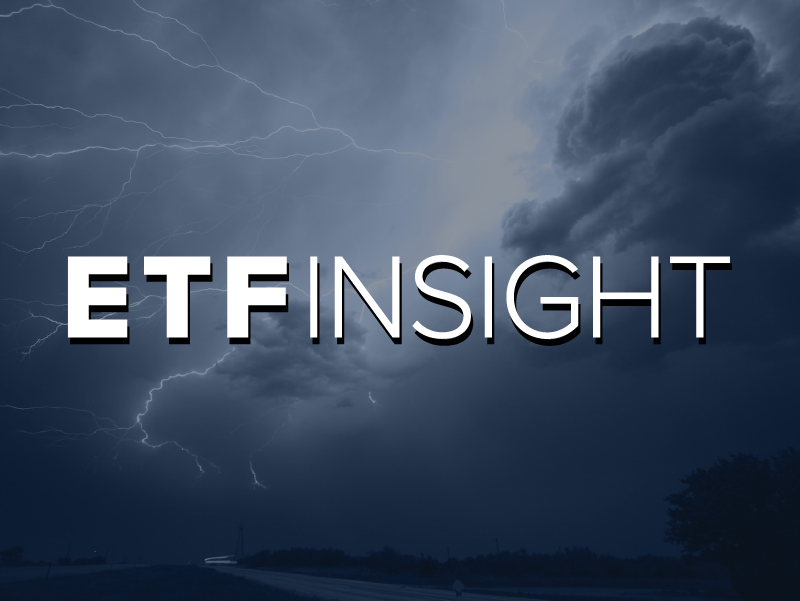The attraction of ETFs as active vehicles is perhaps best typified by JP Morgan Asset Management (JPMAM) which in terms of its European-focused ETF products has prioritised on using active as the point of differentiation when it comes to gaining assets under management.
The asset management giant’s angle of attack was expressed by the comments from Bryon Lake, JPMAM’s Head of International ETFs who said in December when the company launched three actively-managed fixed income funds alongside an ESG ETF that their clients “want the benefits of passive investing and ETFs” but are willing to buy into “attractively priced” active capabilities”.
But what about that most on-trend of ETF investment terms, smart beta? Is it a specifically attractive area for active managers to exploit?
To take it back a few steps, we should first look at the origins of factor investing on which the modern variant of smart beta is built. As Vitali Kalesnik, partner and director of research for Europe at Research Affiliates, points out factor investing – as originated in the fifties and sixties – was originally purely an area for active investment.
But then Moore’s law took hold of chip design. “Factor investing has traditionally been an area for active managers,” says Kalesnik. “It’s just that as the computing power increased in recent decades, so it allowed for the process of factor investing to be automated.”
Now, however, with factor investing increasingly automated and “coming at the push of a button”, it means that the lines between active and passive become blurred. In such a hybrid collision, nuance is everything, suggests Nicolas Rabener from FactorResearch.
“Smart beta can be considered passively active as it differs from plain beta, which is market capitalisation-weighted, but is implemented passively by following a rules-based framework,” he says. “Another perspective highlighting the same hybrid characteristics is that smart beta aims to generate outperformance, similar to active managers, but at fees more in line with passive index strategies.”
A similar sentiment comes from Henry Cobbe at Elston Consulting who suggests that while it is clearly not the case that smart beta needs active management, it is fair to say that the implementation of a smart beta strategy needs “well-researched, well-informed active choices around the design of those index methodologies.”
Mark Northway from Sparrows Capital suggests that it is at the allocation level where manual and active management might come into play. This, he says, is where there is a clear distinction between factor and smart beta investing.
“Factor tilts are expected to attract a premium over the long-term, and no evidence has been presented to date to suggest that factors can be successfully timed through active management,” he says. “Smart beta, on the other hand, often looks to capitalise on short-term market trends; investment in such instruments without a dynamic allocation process would therefore be imprudent.”
Northway points to the hedge fund world for examples of how managers adjust exposure to systematic strategies over time. In doing so they are actively managing the allocation to smart beta.
“One such company is Winton,” he says. “No equivalent champions have yet emerged in the ETF space, but with the increases adoption of outsourced allocation by IFAs there will be competition between DFMs for this crown.”
Rabener at FactorResearch suggests that in his opinion factor exposure should be managed actively “with a sound risk management framework that allows harvesting factor premia more efficiently than via strategic exposure.”
Northway points out that while a systematic approach of replicating the essence of trading strategies is “prima facie” evidence that you do not need active management, the messy reality of implementation means the argument becomes more complicated.
“Algorithms are extremely competent at filtering market data and at reducing hundreds of thousands of share tickers down to a manageable portfolio and associated trade list; but such lists are prone to data errors, to event-related distortion and to technical manipulation such as short squeezes,” he points out. “There is therefore an argument for employing a brain to review the output from the algorithm and to apply a sanity check to the proposed trade list.”
There is one final area where the debate is far from simple. Northway points to the index rebalancing process for ETFs whereby managers are bound by ultra-strict adherence to indices and are slaves to market forces when implementing index changes. In other words, the market knows the details of the associated trades, including size and exact timing.
Northway suggests the resulting positioning by the market participants can create an inefficiency for ETFs and Index funds. “It is insidious because it is reflected in the index calculation and therefore invisible to the investor,” he says.
“There is an argument for a limited degree of active management of this roll process, allowing managers sufficient flexibility to be able to time the execution of roll index roll trades.”
Active wins out in this instance, proving once again that a facile debate around active versus passive needs, perhaps, to be more clearly adjusted to active and passive. As Bernie Nelson, president for North America at Style Analytics says, even with the “broad spectrum of classic passive funds, if you look at the different indices, they all have different biases.”
These can be considered active choices, says Henry Cobbe. “Selection criteria, Min/Max weightings, turnover controls, exclusions, and all other parameters of a weighting scheme require careful active choices by their designers,” he says. “It’s where index providers and their research partners can really stand out.”
ETF Insight is a new series brought to you by ETF Stream. Each week, we shine a light on the key issues from across the European ETF industry, analysing and interpreting the latest trends in the space. For last week’s insight, click here.


